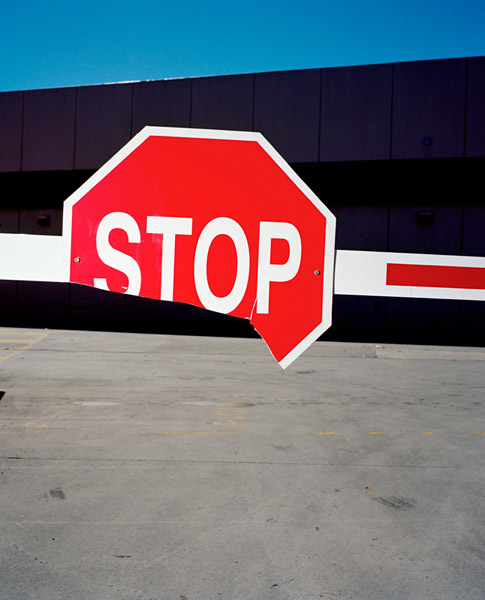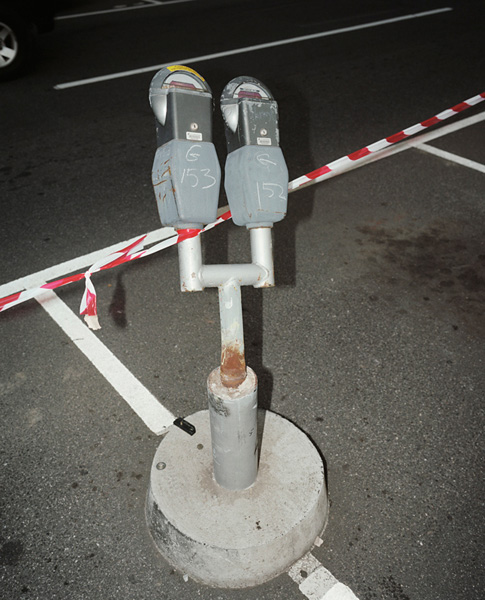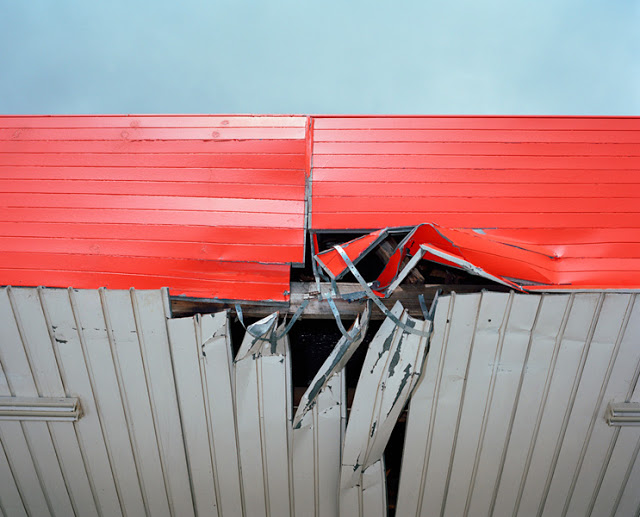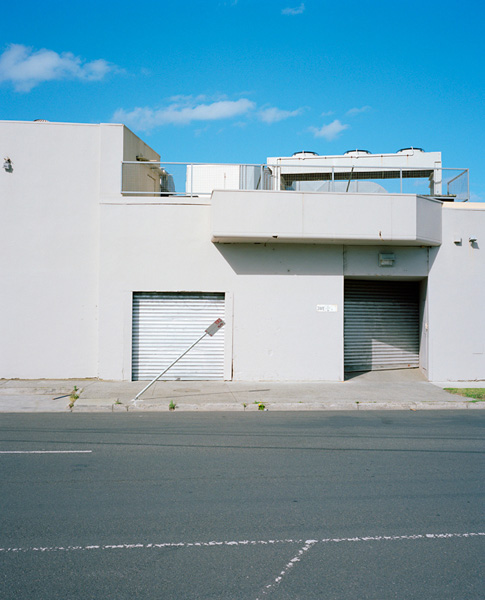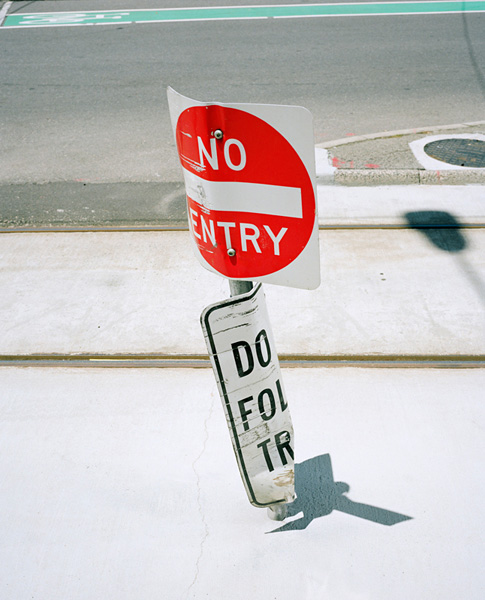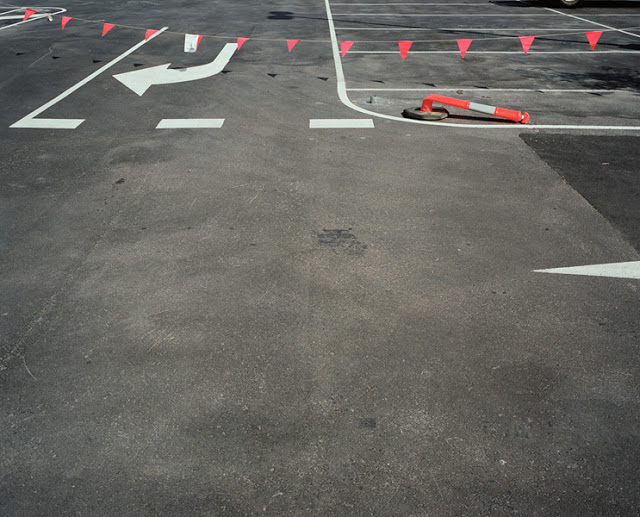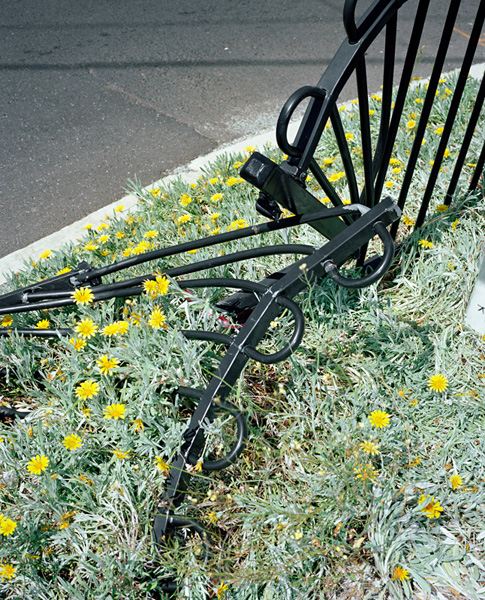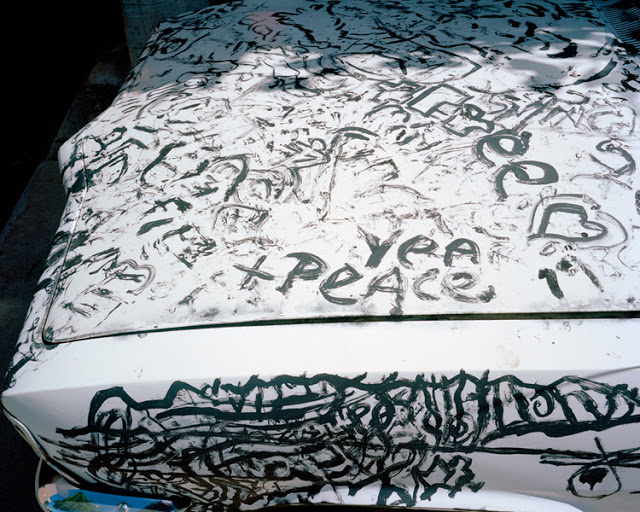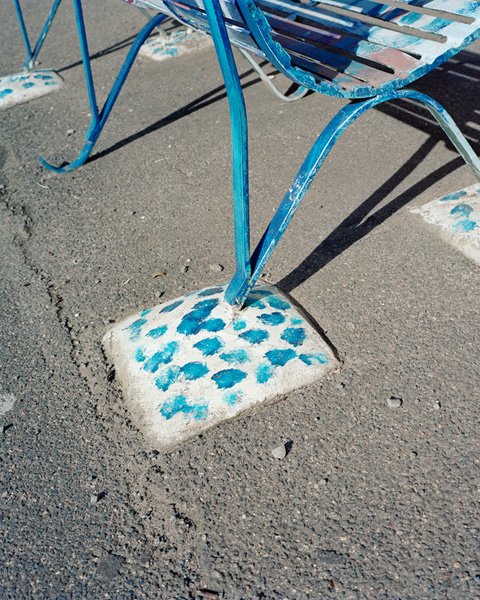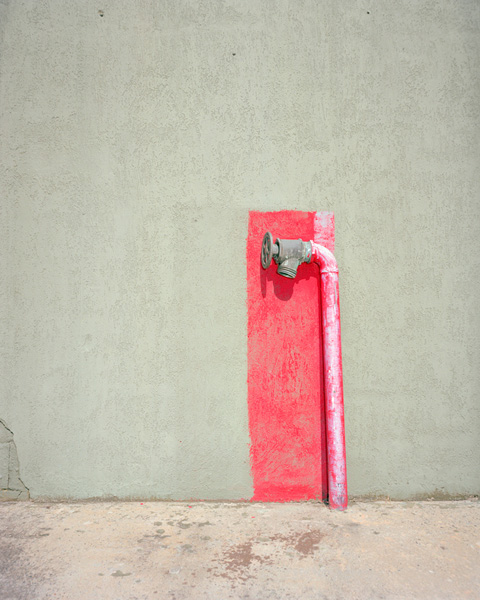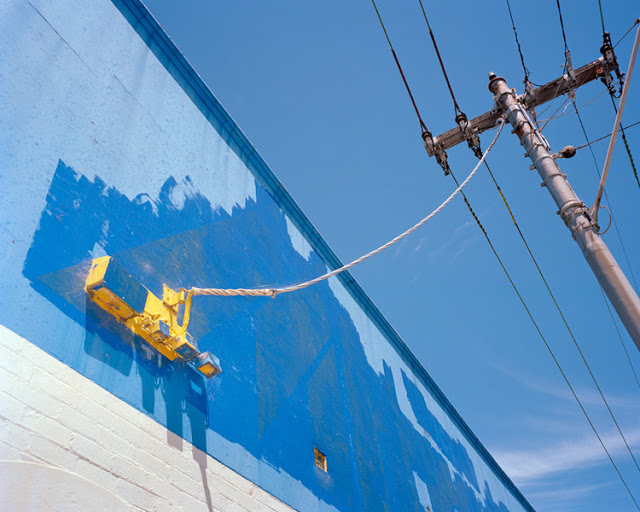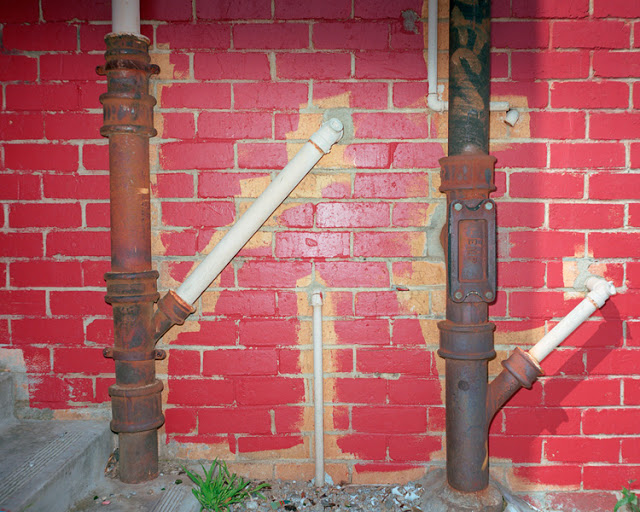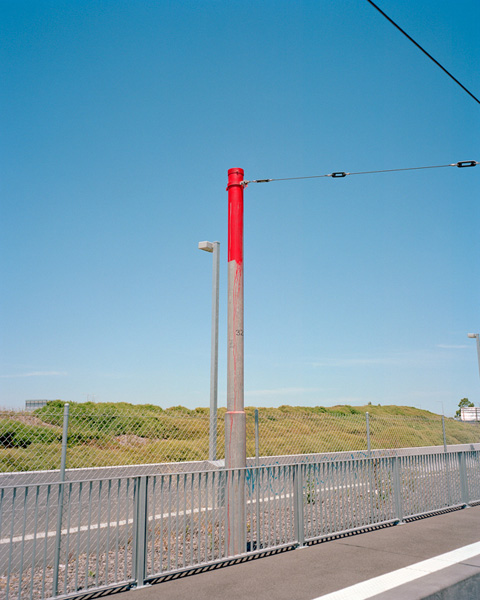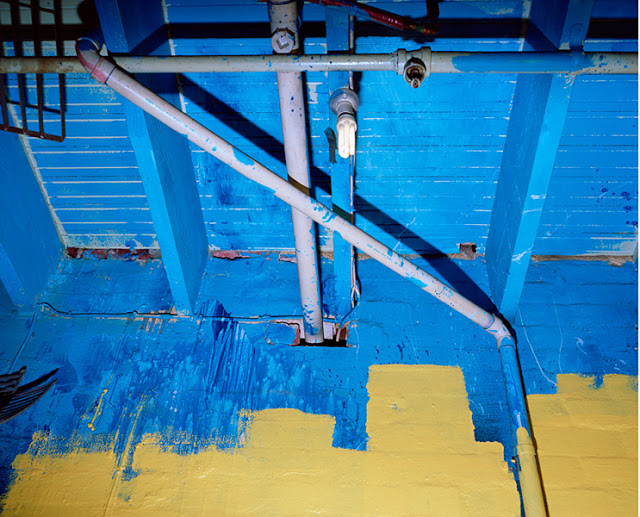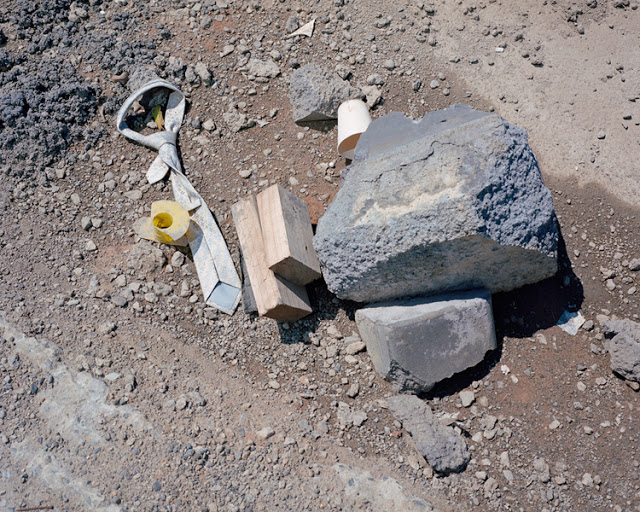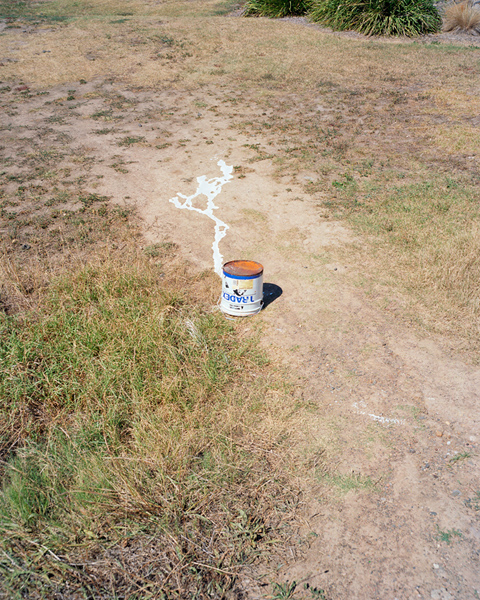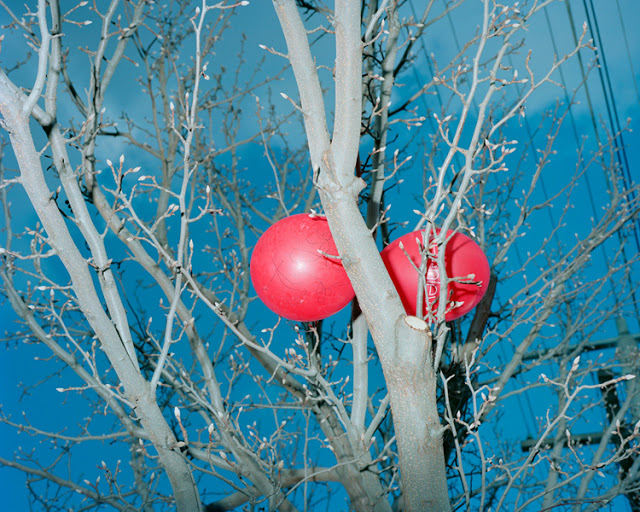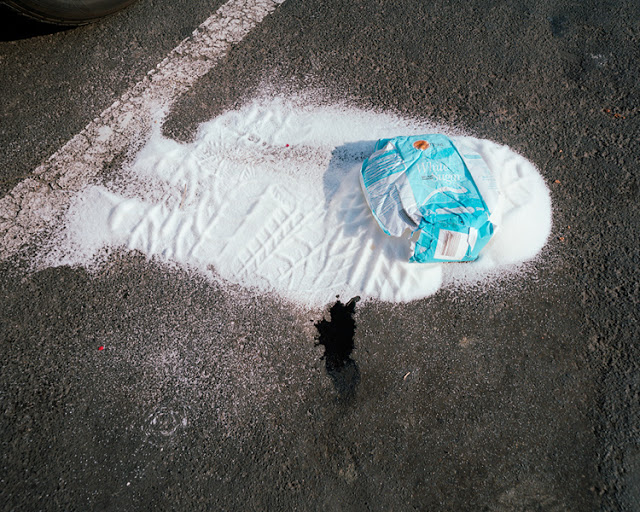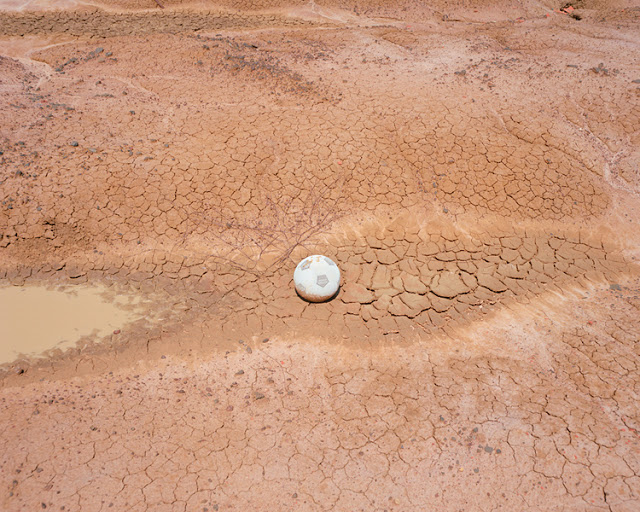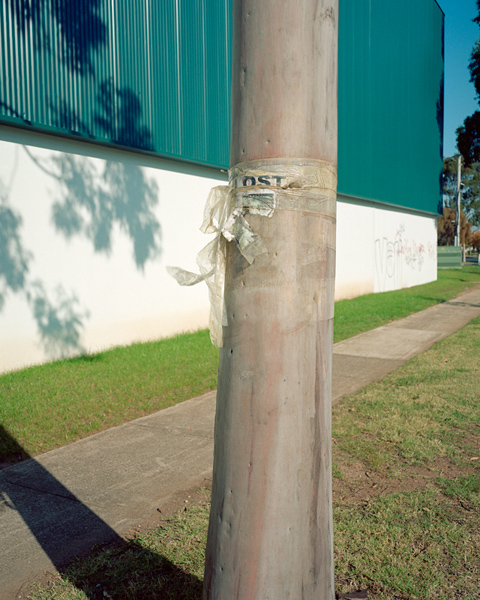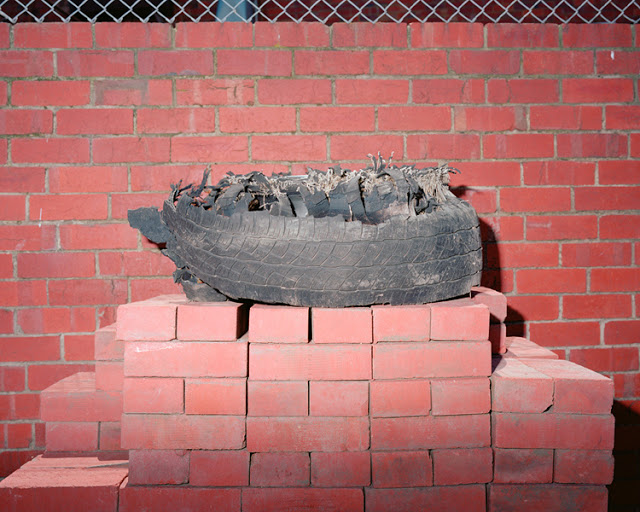Louis Porter:The Small Conflict Archive
On any given day, countless pieces of street furniture have their utilitarian roles abruptly brought into question by careless driving, and it is the results of these minor mishaps that are the subject of Bad Driving. As a foot passenger in life I have always been acutely aware of the impact of cars on the urban environment. Sometimes I wonder for whose benefit many cities have been built, its citizens or its cars. These points of impact, the twisted poles and buckled signs, become selfreferencing historical markers, that sink into the surface of the city, becoming almost invisible.
The series of photographs depicting Crap Paint Jobs, like the majority of the sections in the archive, portrays the remnants of an event, the protagonist of which is no longer present. In its practical manifestation, painting an object, particularly one in a public space, is by its very nature an act engaged in aesthetic harmony. The object is painted to either fit in with its environment, or (especially in commercial settings) stand out.
Two extremes of environment come to mind, the historic centre of a European city, where the way a thing is painted might be legislated in order to maintain a sense of cultural authenticity and an outer suburban shopping complex, where almost identical prefabricated concrete boxes, are painted wildly different colours, in order to differentiate themselves from one another. In either example, if the paintjob is done rather badly, the overall tone of the surrounding area is called into question.
Crap things tend to multiply and travel in packs. If the previous painter has done a terrible job, the standard required by the next painter to do a reasonable job lowers. Although the suggestion is not that a poorly painted lamp post can set in motion a chain of events, that lead to the collapse of a civilization, its contribution to a sense of urban decline is a subject of great interest to The Small Conflict Archive.
Like many of the sets in the Small Conflict Archive, Signs of a Struggle began with a single visual encounter that set in motion a series of thoughts. Seeing a spilt paint can at the base of a small hill in suburbia, I wondered what events had led up to the incident and what had resulted from it. This paint can was, I decided, evidence of a moment of a minor conflict in life. Perhaps it was the “straw that broke the camels back”, perhaps later that day the owner decided not to paint the fence after all, perhaps that was for the best.
I decided to search out more of these tell tale signs. Signs of a Struggle, therefore searches out and collects the traces of accidents, mishaps, disagreements and other deviations in the smooth running of life. There is naturally a large amount of conjecture in any such exercise, as it is impossible to know the exact circumstances of how a spade was broken or a pot of paint spilt. This series and the archive as a whole, should therefore be considered more a musing on the symbolic nature of objects, than a series of confirmed and catalogued facts.
Posts on Lenscratch may not be reproduced without the permission of the Lenscratch staff and the photographer.
Recommended
-
Tara Sellios: Ask Now the BeastsApril 6th, 2024
-
ALEXIS MARTINO: The Collapsing Panorama April 4th, 2024
-
Emilio Rojas: On Gloria Anzaldúa’s Borderlands: The New MestizaMarch 30th, 2024
-
Artists of Türkiye: Eren SulamaciMarch 27th, 2024
-
Love and Loss in the Cosmos: Valeria Sestua In Conversation with Vicente IsaíasMarch 19th, 2024

